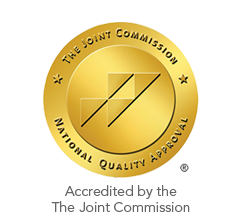Mental health challenges are worsening in workplaces, especially during the COVID-19 pandemic. Take depression for example. The Center for Disease Control and Prevention (CDC) estimates that depression causes 200 million lost workdays each year, costing employers a total of between 17 and 44 billion dollars. Unfortunately, the prevalence of mental health problems is underrepresented because of a general culture of oblivion in professional settings.
Workers who struggle with mental health issues often find it difficult to get support or even speak to employers and coworkers about these challenges. It is time for people in the workforce to be proactive to create a recovery-supportive workplace. Similarly, if you are an individual recovering from addiction or other mental health challenges who has recently returned to work, you might wonder how to communicate your needs to people around you.
Why Have Mental Health Issues Been Ignored in the Workplace?
Although many workers struggle with mental health issues, this topic continues to be ignored. Employees refrain from talking about it out of fear that their jobs might be at stake because they believe mental health issues can cause a perception of underperformance. There is still a stigma attached to common mental health problems such as depression. This stigma can create a lot of anxiety around the topic which further prohibits employees from communicating their mental health needs in the workplace.
Many employers have yet to adopt an informed understanding of the prevalence of mental illness. They consider the employer-employee relationship as largely transactional. When they are not convinced that building a recovery-supportive workplace is worth the time and effort, they have little incentive to do so. All in all, it takes trust and solidarity for both employers and employees to make conversations about mental health awareness and self-care central in their workplace culture.
How Do You Introduce Mental Health Awareness into the Workplace?
When people feel a sense of belonging in a community, they are more open to sharing their life’s challenges. Building a strong sense of community is always the first step. Everyone has a part to play in shaping their workplace into a safe space. Some stress and anxiety at workplaces might be direct triggers to some employees’ mental health issues. These situations are opportunities to gather people around as a support system and address these concerns.
It is important to choose the right time to advocate for mental health awareness in the workplace. When mental health concerns begin impacting employees’ work and overall well-being (or the other way around), no one should hesitate to ask for help from coworkers and employers. Provide education about the area causing struggles and extend trust to them. Help them understand that creating a safe space where all can share the burden is the goal.
Before workers share mental health needs with other co-workers, it may be wise to first have a conversation with their employer or human resources manager. Many workplaces have had other employees in similar situations. Ask if the company offers any kind of support, then share with coworkers ways to help everyone avoid becoming overwhelmed by their workloads.
How Do You Build Mental Health Awareness into Workplace Culture?
The first and primary challenge is still destigmatization. Many people often feel ashamed to admit the fact that they are struggling with mental health issues at work but staying in denial does not heal these problems. On the contrary: it can only make things worse. It takes courage to open up and share one’s vulnerabilities with others, but that is a responsible thing to do, both for oneself and one’s employer.
With the pandemic, the normalization of workplace mental health challenges has joined social movements alongside the likes of racial injustice and natural disaster aid. More and more employers are beginning to grasp the importance of these challenges and the need to address stigma. There are programs like Diversity, Equity, and Inclusion that help steer workplace conversations in a better direction. Initiatives like mental health days, four-day workweeks, unlimited paid time off, counseling, and wellness benefits have been implemented in many workplaces to further boost the trend.
Workplaces need a sustainable cultural change to build mental-health-supportive and recovery-friendly environments. It is one thing for companies to invest in mental health support out of necessity, a whole different endeavor to achieve true constructive change in workplaces. Building a culture of a mentally healthy workplace requires everyone to take part, starting with employers and management. More specifically, there need to be accountability mechanisms such as regular mental health surveys and anti-stigma events to help achieve this goal.
Do you know how to communicate mental health needs with your employers and coworkers? Why are there so many barriers to mental health awareness in the workplace? What are some effective ways to improve and create a recovery-friendly workplace? Discussing mental health in the workplace is, by itself, a way of regaining work-life balance, especially if you are in recovery from addiction. Every person has a role in making their workplace a recovery-friendly space. If you need professional help on how to navigate post-treatment life, including in professional settings, consider Laguna Shores Recovery. Our licensed mental healthcare professionals and therapists have worked with many people who recovered and re-entered the workforce. You will be encouraged to continue relying on your recovery community, including the 12-step programs. We also encourage and coach you to build all areas of your life into a recovery-friendly space. We are committed to providing you with first-class care and services. Call us at 954-688-5806.

 Matthew Beck B.A, M.A, LMFT
Matthew Beck B.A, M.A, LMFT 


